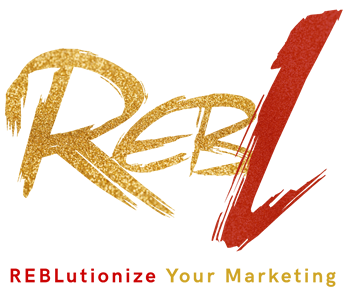Agencies often juggle challenges like maintaining content quality and meeting niche client demands. Convincing clients to try new formats can be tough, too. A clear content strategy is essential for tackling these issues and growing your agency. How do you create one?
In this post, we’ll show you how to craft a content strategy that fosters growth. We’ll cover tackling common hurdles in producing quality content across channels and satisfying demanding clients. By using innovative platforms and flexible pricing models, you can keep your agency competitive and see real results.
Understanding Content Strategy
A content strategy guides how a business creates and manages content to meet its goals. It aligns content decisions with overall business objectives by covering planning, execution, and measurement processes.
Defining Content Strategy vs. Content Plan
“Content strategy” and “content plan” aren’t the same.
A content strategy outlines the long-term goals and vision for content, focusing on why, who, and how content supports the company’s mission. A content plan is more about logistics, detailing the steps to execute the strategy. It includes what topics to cover, when to publish, and where to distribute content.
In marketing agencies:
- Content strategy might focus on defining brand voice and messaging.
- Content plan centers on schedules and formats for upcoming campaigns.
The Role of Content Strategists in Agencies
Content strategists are vital in shaping an agency’s content strategy. They ensure that all content efforts align with business goals by analyzing audience insights, setting goals, overseeing content production, and evaluating results.
They connect various departments like marketing and design, ensuring a unified approach. Acting like a local sports coach, they guide the team toward success while balancing the big picture and finer details. Their work helps steer the agency toward sustainable growth.
Aligning Content Strategy with Business Goals
Align your agency’s content strategy with your business goals for meaningful impact. Ensuring content contributes to the organization’s success involves coordinating with different departments.
Coordinating Across Departments for Unified Goals
Effective communication across departments is essential for a cohesive strategy. It’s about keeping everyone—from marketing to sales and customer support—on the same page.
To achieve alignment, try these strategies:
- Hold regular interdepartmental meetings to discuss objectives and how content can support them.
- Encourage open dialogue to tackle roadblocks and brainstorm solutions together.
- Establish a central repository for all content assets to ensure transparency.
- Appoint a dedicated team or lead to oversee these efforts, keeping communication clear and focused.
Using transition phrases like “building on that” or “with that in mind” can help maintain a flow of ideas. With these strategies, your content strategy will be a thoughtfully crafted component driving your business.
Content Strategy for Client Satisfaction
A targeted content strategy can boost client satisfaction by delivering relevant and valuable content. When clients see content that resonates, they feel understood and appreciated. This connection increases their likelihood of continued brand engagement and loyalty.
Happy clients often become brand advocates, sharing their experiences and driving business through word-of-mouth. Content that aligns with client needs not only maintains relationships but also strengthens them. Clients value efforts that address their specific interests, building trust and long-term associations.
Prioritizing a content strategy centered on value and relevance can improve client retention rates. Satisfied clients contribute to business growth and offer feedback to refine offerings.
Key Components of a Successful Content Strategy
Building a successful content strategy involves several key elements that work well together. Here’s a breakdown of what to focus on:
- Audience Analysis: Understand who you’re talking to by looking into audience demographics, interests, and behaviors.
- Goal Setting: Set clear, measurable goals in line with broader business objectives like increasing brand awareness or boosting engagement.
- Content Creation: Produce high-quality content that resonates with your audience. This could include blog posts, social media updates, videos, or podcasts, depending on where your audience prefers to engage.
- Distribution: Choose the right channels to reach your audience effectively, such as social media platforms, your website, or email newsletters, ensuring they align with your goals.
- Performance Measurement: Use analytics tools to assess what’s working and make necessary adjustments. This helps keep your strategy adaptable and supportive of agency growth.
Examples of Successful Content Strategies
- Personalized Email Campaigns: Tailoring messages to individual preferences fosters connection and anticipation. Clients feel valued, boosting their loyalty to the brand.
- Interactive Content: Webinars and Q&A sessions invite participation and feedback. These formats allow for insights and content adaptation, enhancing client relationships and experiences.
- In-Depth Guides or Resources: These address common client questions, positioning the brand as a trusted resource. By solving real issues, they encourage sharing, increasing reach and driving new opportunities.
A well-crafted content strategy not only meets business goals but also delights clients. Satisfied clients champion your brand, enhancing business development.
Best Practices for Implementing Content Strategy
Implementing a content strategy that hits the mark doesn’t have to be complex. Here’s a straightforward checklist to keep you on track:
- Regular Audits: Check your content often to see what’s working and what needs improvement.
- Stakeholder Engagement: Get all relevant teams and clients involved for diverse input.
- Consistency in Tone and Voice: Keep your brand’s tone consistent to strengthen identity and trust.
- Data-Driven Adjustments: Use data, not guesses, to guide your strategy changes.
- Continuous Refinement: Keep refining your strategy to adapt to new changes and conditions.
Think about how these practices could fit into what you’re already doing. Are there areas to tweak or try out new techniques? By reviewing and improving regularly, your content strategy stays fresh and focused.
Enhancing Agency Growth through Content
Using a good content strategy really boosts agency growth.
- Adaptability: Quickly adapt to client feedback and market trends to keep content relevant.
- Trying New Things: Test new formats and channels to meet your audience’s changing needs and check they help your growth goals.
Content strategy takes time, but it’s definitely worth it. By using these practices, you’ll likely see noticeable growth. Have you tried these yet? Reflect on how they might elevate your content efforts.
Measuring Success in Content Strategy
To evaluate your content strategy effectively, use a mix of measures and tools.
Start with Key Performance Indicators (KPIs) like:
- Website traffic
- User engagement (bounce rates, time-on-page)
- Conversion rates
Do not forget about analytics tools; they are crucial for this process.
- Google Analytics tracks web traffic and user behavior, showing which content resonates.
- Social media analytics offer data on post engagement and audience growth.
- Tools like SEMrush and Moz help assess search engine rankings and SEO opportunities.
Methods for Optimizing Strategic Outcomes
Interpreting data is key to keeping your strategy relevant. Look for trends, like drops in engagement or high-performing content. Use these insights to adjust publishing times or focus areas. Feedback from surveys and comments offers insight into audience values.
✓ Encourage audience input for continuous content improvement.
✓ Regularly review your strategy throughout its lifecycle—this ensures your content remains dynamic and aligns with market changes and business goals.
✓ Adapt your tactics based on insights—this keeps your strategy evolving with agency ambitions and audience demands.
Key Takeaways
For agency growth, a solid content strategy really sets the pace. It aligns content efforts with business goals, boosting client satisfaction and agency expansion.
- Audience Analysis: Know your audience well to create content that resonates.
- Goal Alignment: Tie content goals clearly to business outcomes.
- Cross-Departmental Communication: Keep dialogue open to integrate content strategies agency-wide.
- Stakeholder Engagement: Involving everyone in strategy development can offer valuable insights.
- Continuous Evaluation: Use metrics and feedback to adapt strategies continually.
Now it’s your turn. Think about how these strategies and best practices can fit into your own content efforts. This reflection could reveal areas for improvement or suggest new tactics to fine-tune your content strategy to meet your goals.
Content strategy should be more than just a part of your business; it’s a vital engine for agency growth and client satisfaction.




